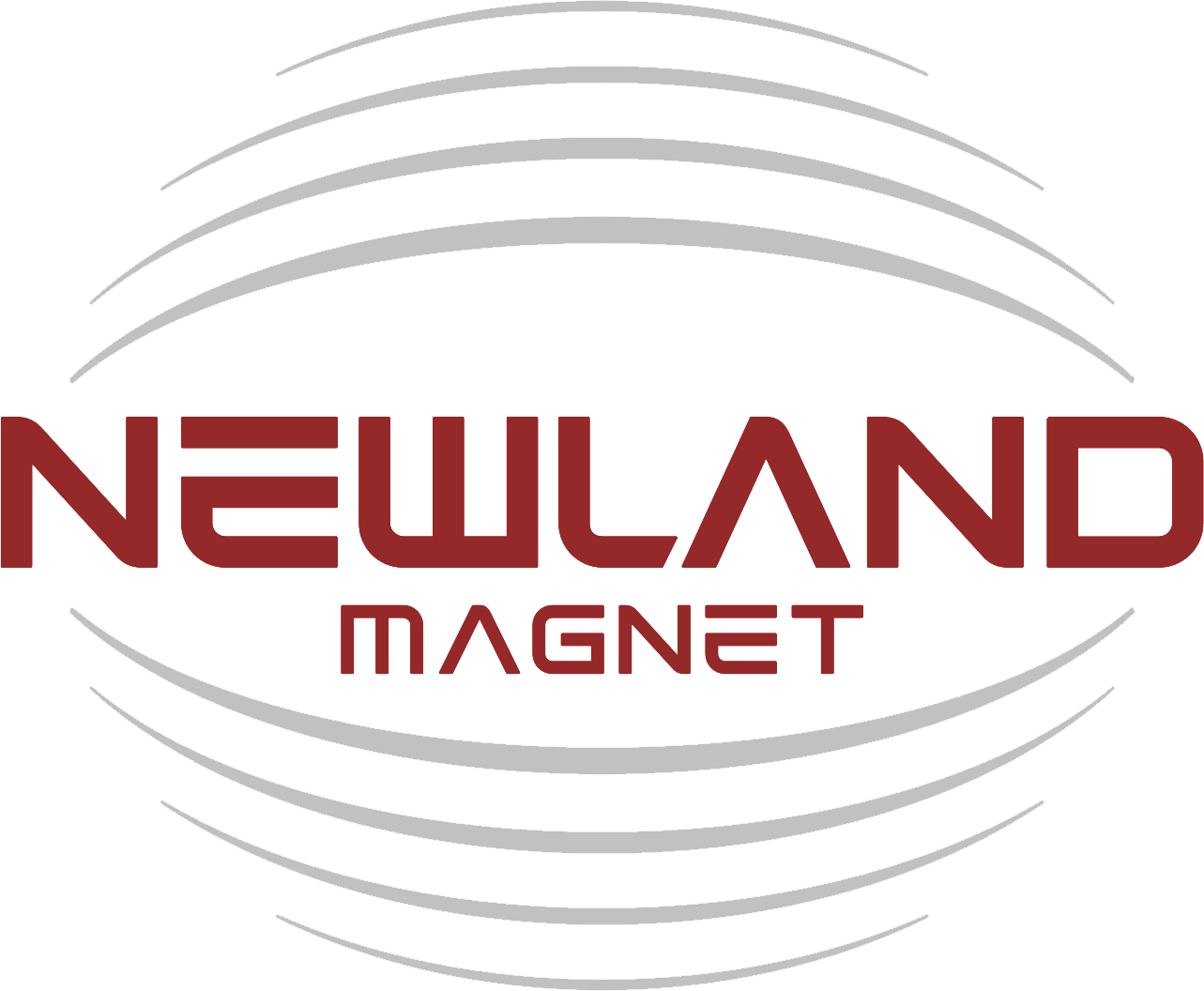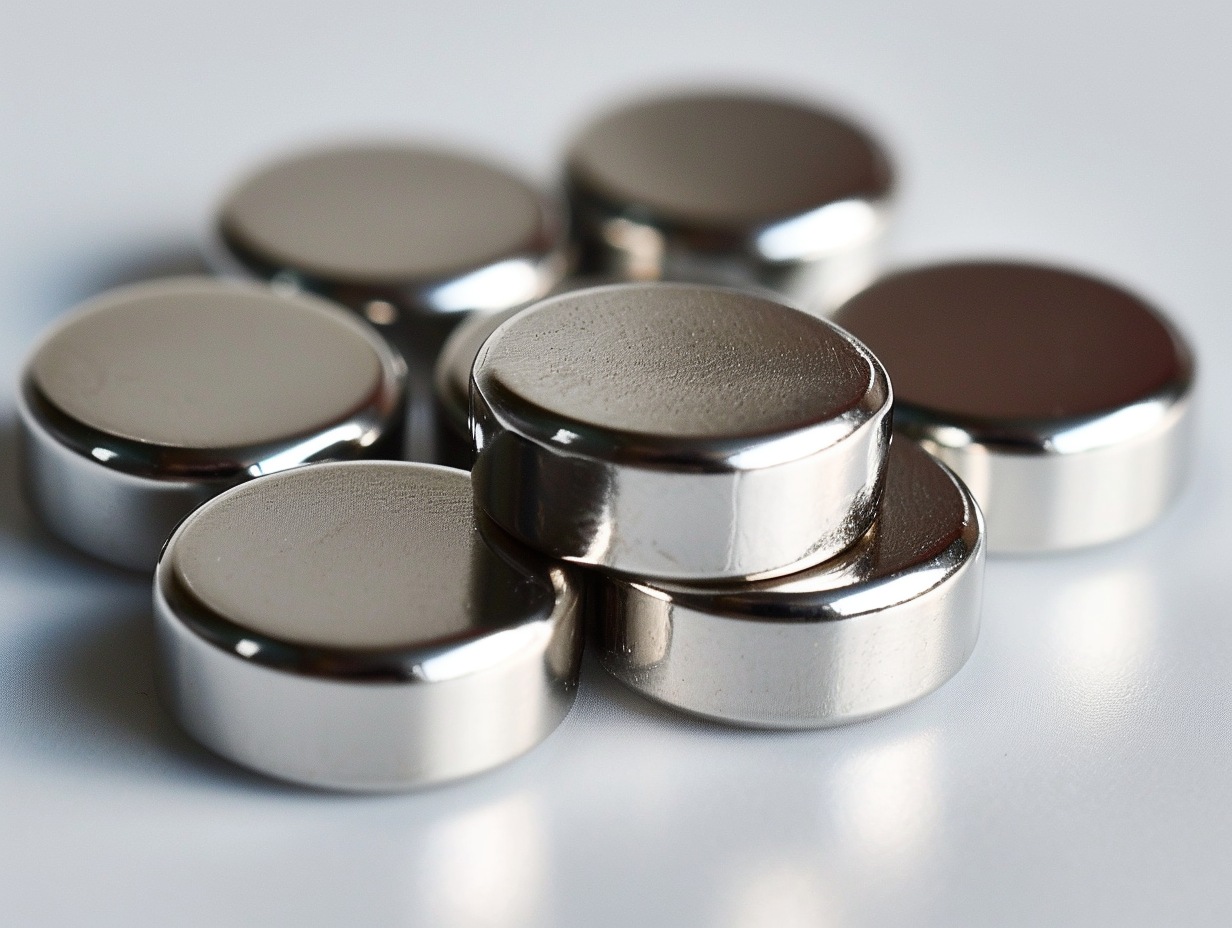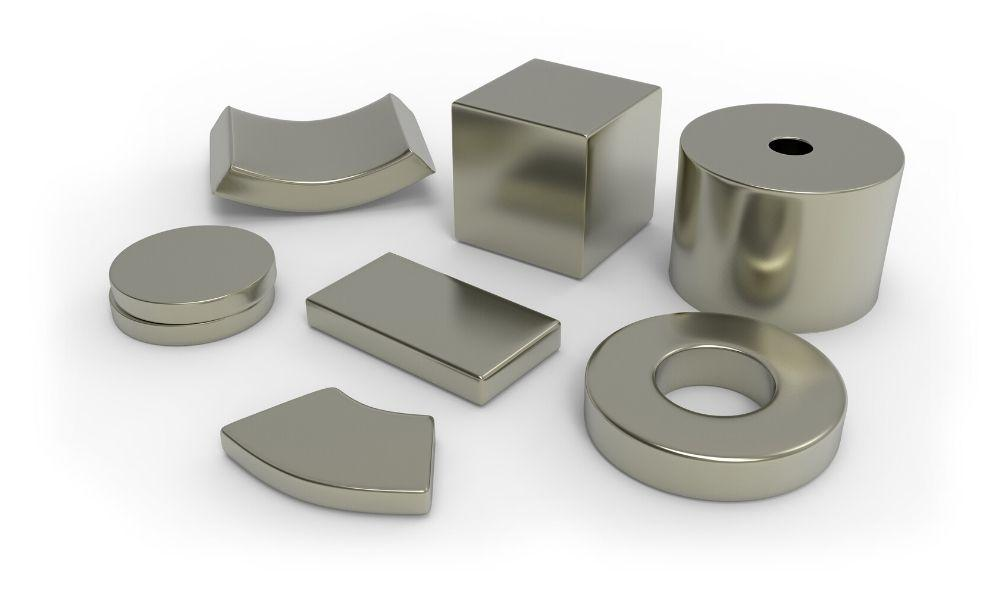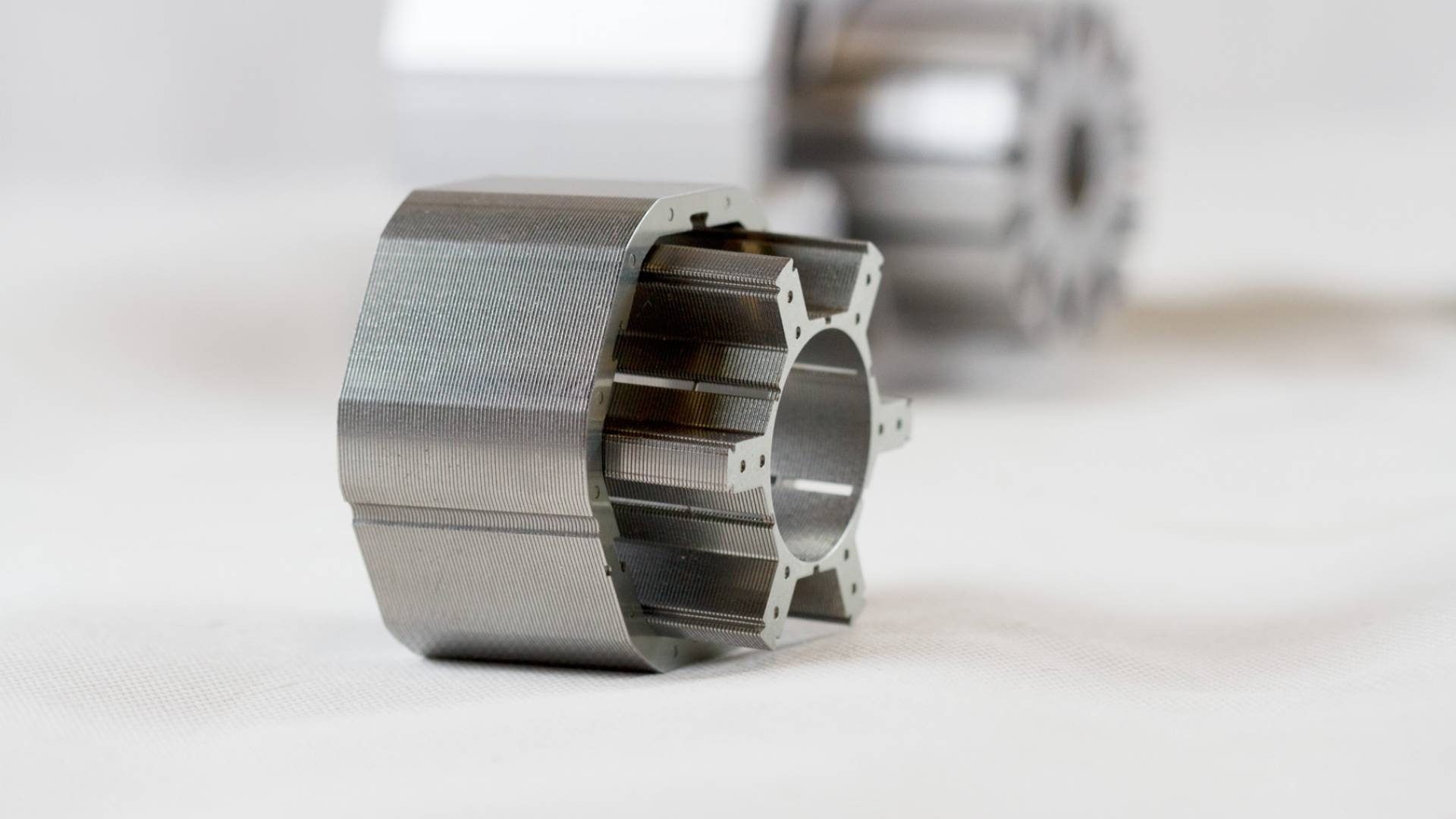جدول المحتويات
Neodymium–iron–boron (NdFeB) magnets are among the most powerful permanent magnets available today. They provide exceptional magnetic performance in a compact size, which is why they are widely used in industries ranging from automotive and robotics to consumer electronics, renewable energy systems, and medical devices.
However, despite their remarkable strength, NdFeB magnets are chemically reactive and highly susceptible to corrosion, oxidation, and mechanical damage. Without proper surface protection, even short exposure to moisture or oxygen can significantly reduce their magnetic strength and shorten their service life.
For engineers, manufacturers, and buyers, understanding the electroplating process is crucial. Electroplating not only improves corrosion resistance but also enhances mechanical durability, aesthetic appearance, and long-term performance. Professionals search for guidance on electroplating to ensure reliable magnet operation, avoid costly failures, and optimize performance in demanding applications.
This article provides a comprehensive overview of the electroplating process for NdFeB magnets, covering preparation, material selection, challenges, advantages, and practical considerations for modern industrial usage.
1. Why do NdFeB magnets need to undergo electroplating?

NdFeB magnets are inherently reactive because of their neodymium content. Even small amounts of moisture, oxygen, or chemical exposure can trigger oxidation and surface degradation. This can lead to flaking, cracking, and a reduction in magnetic strength, which compromises the performance of the device or system the magnet powers. In applications such as motors, sensors, and actuators, even minor performance losses can affect efficiency, accuracy, or reliability.
Another important reason is the magnets’ mechanical brittleness. NdFeB magnets can chip or fracture under stress, even during careful handling. Once a crack forms, it exposes the inner material to environmental factors, accelerating corrosion. Electroplating provides a protective barrier that not only prevents oxidation but also strengthens the surface against mechanical stress.
Electroplating also stabilizes magnetic performance across diverse environments. Magnets may be used in high-humidity conditions, temperature fluctuations, exposure to chemicals, or high-speed rotational applications. A properly plated surface maintains magnetic output, reduces material wear, and ensures consistency over the entire lifespan of the device.
Additionally, uncoated magnets can shed fine metallic dust. This dust can contaminate surrounding components, interfere with electrical circuits, or pose safety risks in precision assemblies. Electroplating creates a smooth, sealed surface that minimizes shedding, improving compatibility with adhesives and cleanroom environments. In consumer products, it also provides a polished appearance that enhances perceived quality.
Finally, electroplating allows magnets to perform safely in high-demand industrial and medical environments. From electric vehicle motors to robotic actuators and MRI-compatible equipment, coated NdFeB magnets maintain performance where failure could result in downtime, inefficiency, or safety hazards. Without electroplating, these magnets are prone to early degradation, which could require costly replacements or system redesigns.
2. What preparations are needed before electroplating NdFeB magnets?

Preparation is the foundation of a successful electroplating process. The quality, adhesion, and uniformity of the coating depend heavily on proper pre-treatment. NdFeB magnets are highly reactive and can oxidize within minutes of cleaning, making precise preparation essential. The process involves cleaning, oxide removal, activation, inspection, and in some cases, pre-conditioning for complex shapes.
Cleaning and degreasing
Magnets are first cleaned to remove oils, machining residues, dust, or polishing compounds that could interfere with plating adhesion. Solvent cleaning, ultrasonic cleaning, or alkaline cleaning solutions are commonly used depending on the scale of production. Multi-stage cleaning processes ensure that the surface is uniformly prepared and chemically ready for subsequent steps.
Proper cleaning prevents weak points in the plating layer, which can lead to localized corrosion. Even microscopic residues can cause uneven deposition or create voids in the plating, reducing long-term durability. Handling after cleaning is also critical; contact with fingers or contaminated tools can reintroduce oils or particles that compromise the coating.
Oxide removal and activation
NdFeB magnets form a thin oxide layer almost immediately after cleaning. This oxide prevents proper adhesion of the electroplated material, so it must be removed using acid activation or chemical etching. The process exposes a fresh, chemically active surface that can bond effectively with the plating layer.
Timing is critical. If the magnet is exposed to air after activation, oxidation can occur again within minutes, weakening the coating. Many production lines use automated transfer systems to move magnets directly from activation to the plating bath, minimizing exposure and maintaining surface reactivity.
Inspection for cracks, defects, and surface irregularities
Before plating, magnets are inspected for micro-cracks, chips, burrs, or surface roughness. Even small imperfections can prevent uniform coating deposition and create corrosion-prone spots. Advanced inspection methods such as visual inspection under magnification, micro-section analysis, or ultrasonic scanning are used in high-precision applications.
Magnets with minor defects can be polished or repaired to create a uniform surface. Severely damaged pieces are typically rejected to ensure quality consistency. This step is critical in industries where the magnet’s long-term reliability directly impacts system performance, such as aerospace or medical devices.
Pre-conditioning for complex shapes
Some magnets have irregular geometries, thin edges, or holes that make plating more challenging. Pre-conditioning, such as temporary masking or applying surface roughness modifiers, helps ensure uniform coating thickness across all surfaces. This additional step is particularly important for small, high-precision magnets used in sensors or micro-motors.
3. Material selection for NdFeB magnet electroplating

The choice of electroplating material significantly affects the magnet’s corrosion resistance, mechanical durability, chemical resistance, and overall performance. Selecting the right coating depends on environmental exposure, mechanical stress, and application-specific requirements.
Nickel and multi-layer nickel systems
Nickel is the most widely used plating material for NdFeB magnets because of its strong corrosion resistance, hardness, and excellent adhesion. Multi-layer systems such as nickel–copper–nickel are common, where copper improves bonding and stress distribution while the outer nickel layer provides a smooth, protective surface. This configuration is suitable for most industrial applications including motors, speakers, actuators, and general electronics.
Nickel coatings also improve wear resistance, making magnets more resistant to chipping and abrasion during assembly or operational use. For high-speed applications such as drone motors or automotive actuators, this mechanical protection is critical.
Zinc coatings
Zinc plating is valued for outdoor and high-humidity applications. It offers sacrificial protection, corroding slowly instead of the magnet itself. This type of coating is commonly used in low-cost products, outdoor sensors, and mechanical assemblies where environmental exposure is unavoidable.
Zinc coatings are also compatible with additional protective layers, such as passivation films, which further extend the magnet’s lifespan in aggressive environments like marine equipment or coastal installations.
Epoxy and specialty coatings
Epoxy coatings provide chemical resistance, protecting magnets from oils, acids, solvents, and abrasive particles. Epoxy is often applied over a metallic underlayer for optimal adhesion and durability. These coatings are commonly used in automotive sensors, chemical processing equipment, and medical devices.
Specialty coatings such as gold, tin, or silver are applied in high-precision or electrically sensitive applications. Gold coatings, for example, prevent oxidation while maintaining excellent conductivity for sensor interfaces or electrical contacts. Silver coatings are used in certain electronic devices where both conductivity and corrosion resistance are required.
4. What are the challenges in electroplating NdFeB magnets?

Electroplating NdFeB magnets is a complex process with several technical challenges. Each stage requires precision and strict process control to achieve high-quality, uniform coatings.
Fast oxidation
NdFeB magnets can form an oxide layer within minutes of exposure to air, which interferes with adhesion. Delays between cleaning, activation, and plating can compromise coating quality, requiring automated, continuous workflows to minimize air exposure.
Brittleness and handling
The magnets’ fragile structure means that even minor impacts during cleaning, racking, or plating can create cracks or chips. These defects can compromise plating integrity and make the magnet more prone to corrosion.
Porosity and trapped substances
The sintered structure of NdFeB contains microscopic pores, which can trap cleaning solutions, chemicals, or gases. These trapped substances may expand during plating or heating, causing blisters, bubbles, or peeling in the coating.
Temperature sensitivity
High temperatures during plating can partially demagnetize NdFeB magnets or alter their microstructure. Maintaining controlled bath temperatures is essential to preserve magnetic properties while achieving proper coating adhesion.
Complex geometries and uneven coverage
Magnets with irregular shapes, holes, or thin edges require precise control of current density and plating solution agitation to achieve uniform coverage. Uneven deposition can create weak points vulnerable to corrosion or mechanical damage.
Hydrogen absorption
During electroplating, NdFeB magnets can absorb hydrogen, leading to micro-cracks, blistering, and reduced magnetic performance. De-hydrogenation treatments or bath chemistry adjustments are often required to address this issue.
Surface contamination and environmental factors
Trapped debris from machining, polishing residues, and airborne particles can interfere with plating adhesion. High humidity or contamination near plating baths can accelerate oxidation, making cleanroom-level control often necessary.
Inspection demands
Micro-voids, pinholes, or thin areas may be invisible to the naked eye but can compromise coating integrity. Advanced inspection methods such as salt-spray testing, porosity evaluation, or micro-section analysis are required to ensure uniform, durable coatings.
5. What are the advantages of electroplating NdFeB magnets?

Electroplating provides multiple benefits, making NdFeB magnets suitable for high-performance, long-lasting applications.
Improved corrosion resistance
Electroplating creates a protective layer that shields the magnet from moisture, oxygen, and chemical exposure. This prevents oxidation and extends the magnet’s usable life, even in harsh industrial or outdoor environments.
Enhanced mechanical durability
Plating increases surface hardness, reducing chipping, scratching, or flaking during handling, assembly, and operation. This is particularly important in high-speed production, robotics, and automotive applications.
Stable long-term performance
The coating ensures consistent magnetic output by preventing corrosion-related weakening. This stability is critical for precision applications such as sensors, motors, actuators, and electronic devices.
Chemical and environmental resistance
Specialized coatings protect magnets from acids, oils, solvents, and aggressive chemicals. Multi-layer coatings like Ni–Cu–Ni or epoxy layers allow magnets to perform reliably in automotive, marine, or industrial environments.
Improved appearance and cleanliness
Electroplated magnets have a smooth, polished surface, reducing particle shedding and improving visual quality. This is valuable for consumer electronics, medical devices, and visible industrial components.
Compatibility with adhesives and assemblies
Plated surfaces enhance bonding with adhesives, housings, or mechanical fixtures. This ensures long-term stability in assemblies where uncoated magnets might degrade, shift, or contaminate surrounding components.
Dimensional and structural stability
Electroplating adds uniform thickness, strengthens the surface, and prevents micro-flaking or powder shedding. This ensures safer handling, cleaner assemblies, and reliable performance in high-precision devices.
Tailored surface properties
Different plating materials allow customization for conductivity, reflectivity, lubricity, or wear resistance. This adaptability ensures magnets meet the specific requirements of modern applications.
خاتمة
Electroplating NdFeB magnets is a critical step for ensuring durability, reliability, and stable magnetic performance in demanding applications. By understanding the preparation, material selection, challenges, and advantages, engineers and manufacturers can optimize magnet performance for industrial, automotive, medical, and consumer devices.
Proper electroplating extends service life, enhances mechanical strength, provides chemical resistance, and ensures consistent output across diverse environments. Advanced coating technologies allow customization for specific applications, from high-speed motors to precision sensors. Mastering these practices not only prevents costly failures but also improves overall product quality, efficiency, and safety.
With the growing demand for compact, high-performance magnets, electroplating remains a cornerstone of NdFeB magnet manufacturing. It transforms a reactive, fragile material into a reliable, long-lasting component capable of meeting the rigorous demands of modern technology.






